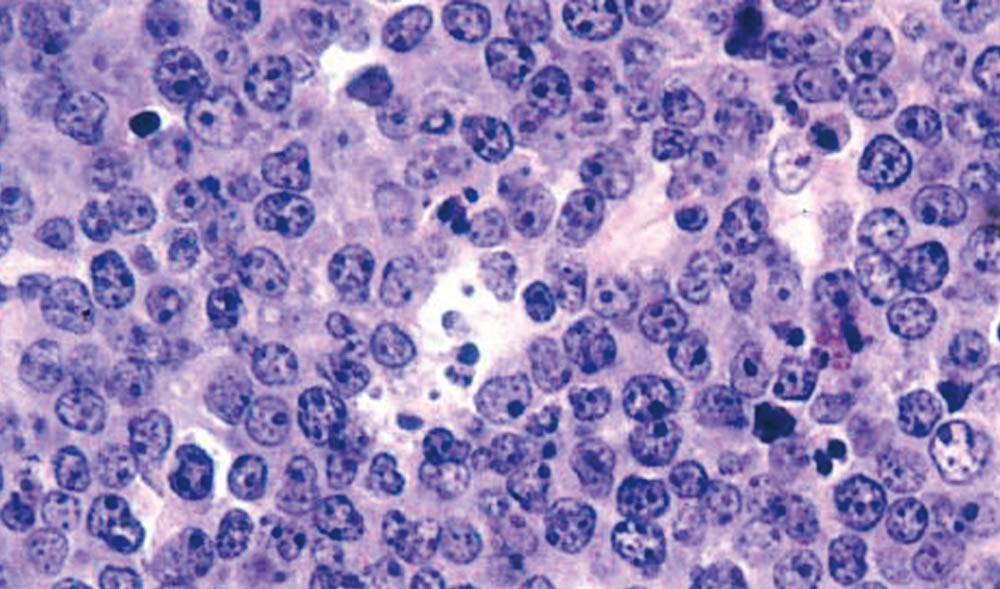After a patient is diagnosed with lymphoma, doctors determine the stage of the disease — or how widespread the cancer is — and then come up with a treatment plan. As with most cancers, there are generally four different stages of lymphoma: I, II, III, and IV.
Lymphoma staging
Stage I lymphoma
In stage I non-Hodgkin and Hodgkin lymphoma, cancer is found in one lymphatic area — the lymph nodes, tonsils, thymus, spleen, or one localized non-lymph site.
Stage II lymphoma
Stage II means that cancer is found in two or more lymph node groups either above or below the diaphragm (the thin muscle below the lungs that helps breathing and separates the chest from the abdomen).
Stage III lymphoma
In stage III lymphoma, cancer is more disseminated and found in one or more lymph node groups above and below the diaphragm.
Stage IV lymphoma
In stage IV, cancer is found throughout one or more organs that are not part of a lymphatic area (lymph nodes, tonsils, thymus, or spleen); or, cancer is found in one organ that is not part of a lymphatic area and has spread to lymph nodes far away from that organ; or cerebrospinal fluid, the liver, bone marrow, or lungs.
Learn More:
- What’s the Difference Between Hodgkin Lymphoma and Non-Hodgkin Lymphoma? [Infographic]
- What’s the Connection between Night Sweats and Cancer?
The staging for these cancers is different than it is for solid tumors because lymphocytes, which are the cells of origin for lymphomas, travel throughout the body — in the lymphatic system, and in the blood system — and tend to land in the body in multiple places, all at the same time. As a result, many patients have stage III or IV lymphoma when they are diagnosed at the Adult Lymphoma Program of the Hematologic Oncology Treatment Center at Dana-Farber, according to oncologist Ann LaCasce, MD, MMSc.
“Sometimes staging impacts therapy choices, but it doesn’t have the prognostic implications for lymphoma that it does in solid tumors,” LaCasce says.
How does lymphoma progress?
Hodgkin and non-Hodgkin lymphoma often follow different courses of progression. Hodgkin lymphoma tends to progress in an orderly fashion, moving from one group of lymph nodes to the next, and is often diagnosed before it reaches an advanced stage. Most patients with non-Hodgkin lymphoma are diagnosed at a more advanced stage.
Stages of non-Hodgkin lymphoma may also include E and S. “E” stands for extranodal, and means the cancer is found in an area or organ other than the lymph nodes or has spread to tissues beyond, but near, the major lymphatic areas. “S” stands for spleen and means the cancer is found in the spleen.
Stages of Hodgkin lymphoma may include A, which indicates that the patient does not have B symptoms (fever, weight loss, or night sweats); or B, which means the patient has B symptoms.
Recurrent adult non-Hodgkin lymphoma is cancer that has recurred (come back) after it has been treated. The lymphoma may come back in the lymph system or in other parts of the body. This type of lymphoma is not normally staged.
Treatments for lymphoma vary depending on the type of disease, its aggressiveness, and location, along with the age and general health of the patient.
About the Medical Reviewer

Ann LaCasce, MD, MMSc, Associate Professor of Medicine, is a lymphoma specialist and is the Director of the Dana-Farber/Mass General Brigham Fellowship in Hematology/Oncology. She serves on the Alliance Lymphoma Committee, the National Cancer Comprehensive Lymphoma Guidelines Panel and the Lymphoma Research Foundation’s Scientific Advisory Committee.

